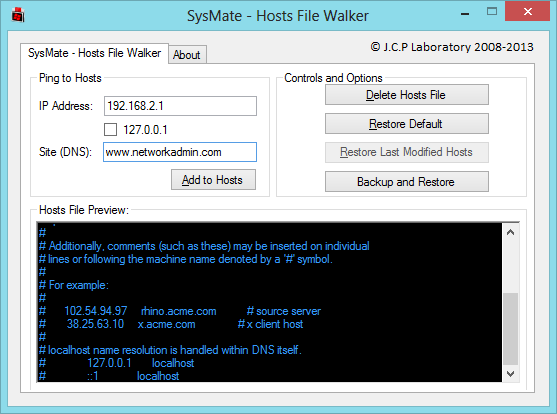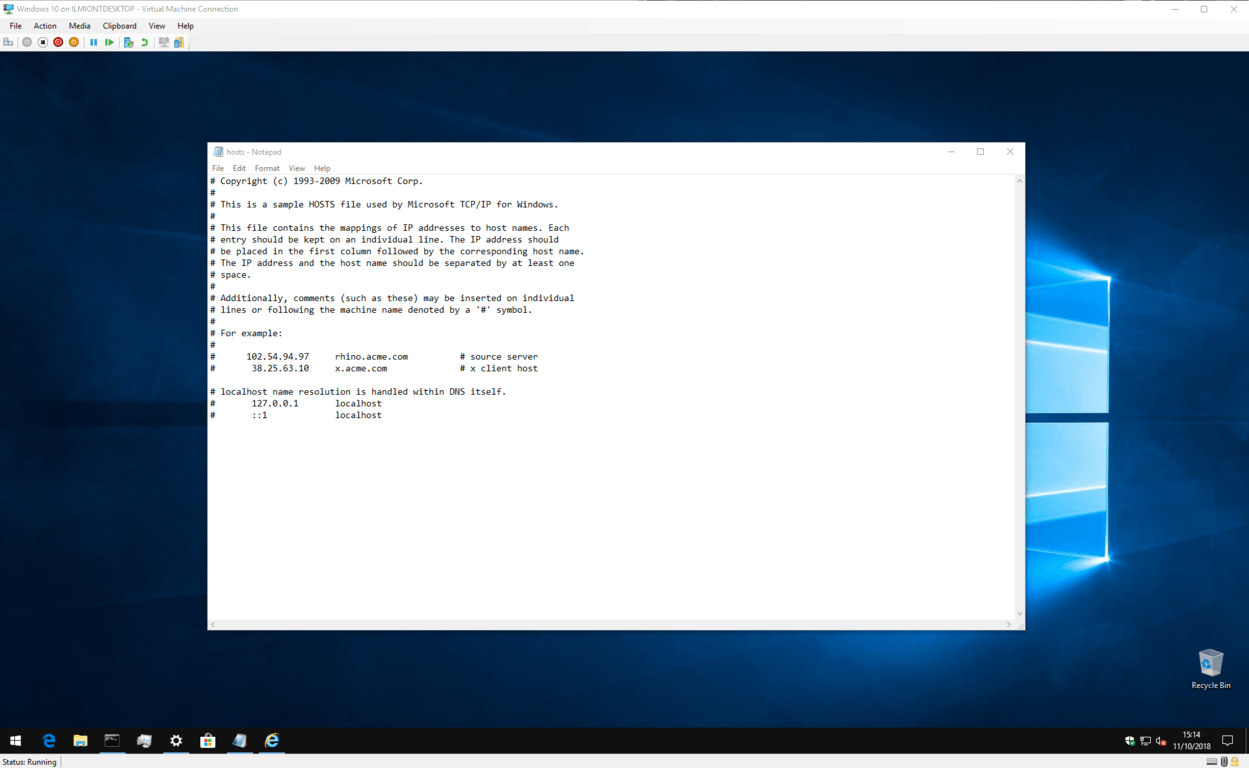

- Windows hosts file standard accounts generator#
- Windows hosts file standard accounts manual#
- Windows hosts file standard accounts pro#
- Windows hosts file standard accounts windows#
Search for %WinDir%\System32\Drivers\Etc, and then select the File folder icon.Ħ. On the File menu, select Save as, type "hosts" in the File name box (as displayed in the following image), and then save the file to the desktop.ĥ. # For example: # 102.54.94.97 # source server # 38.25.63.10 x. # x client host # localhost name resolution is handle within DNS itself. # Additionally, comments (such as these) may be inserted on individual # lines or following the machine name denoted by a '#' symbol. # The IP address and the host name should be separated by at least one # space. The IP address should # be placed in the first column followed by the corresponding host name. Each # entry should be kept on an individual line. # This file contains the mappings of IP addresses to host names. # This is a sample HOSTS file used by Microsoft TCP/IP for Windows. # Copyright (c) 1993-2006 Microsoft Corp. Copy the following text, and then paste the text into the file: To do this, search for “Notepad”, and then tap or click the Notepad icon.Ģ. To reset the Hosts file back to the default, follow these steps:ġ. To reset the Hosts file back to the default, follow these steps according to your operating system: If the Hosts file is changed from default, resetting it can help resolve some connectivity issues. Entirely blank lines in the file are ignored. Comment lines may be included, and they are indicated by a hash character (#) in the first position of such lines. Each field is separated by white space (Tabs are often preferred for historical reasons, but spaces are also used). The Hosts file contains lines of text consisting of an IP address in the first text field followed by one or more host names. The hosts file is one of several system resources that address network nodes in a computer network and is a common part of an operating system's IP implementation. The Hosts file is used by the operating system to map human-friendly hostnames to numerical Internet Protocol (IP) addresses which identify and locate a host in an IP network.
Windows hosts file standard accounts manual#
Also since there is an unlimited total number of transfers, you can utilize up to 100 Manual Transfers.įor more information please see our Transfers Support Article, contact our transfers department at, or call 866.96.This article helps you reset the Hosts file back to the default.
Windows hosts file standard accounts pro#
Another example: A Pro Dedicated server includes unlimited cPanel to cPanel transfers, this means you can have 150 sites (or even more) moved. Out of this 30, you can have 20 cPanel to cPanel transfers and 10 Manual Transfers, or any combination of the two that totals 30 or less websites.

Windows hosts file standard accounts generator#
Please note that this does require that your old host's cPanel backup generator to be active.Ī few examples: An Aluminium Reseller account includes up to 30 free transfers. This will also include your emails and email accounts. Be sure to follow the same format as you find in your file when inserting the HostGator IP and the domain name:ġWhile we can do unlimited cPanel to cPanel transfers for you, depending on your account, you will have a limited number of Manual Transfers.ĢFull cPanel transfers include all domains, Addon Domains, Subdomains, and cPanel settings.
Windows hosts file standard accounts windows#
There should already be an entry for localhost. Earlier versions of Windows have different formats for hosts file entries.Open the file for editing with Notepad.Verify that the file is not read-only by right-clicking it and choosing Properties.Select the hosts file in your Windows directory (or WINNT\system32\drivers\etc).To find the Windows hosts file location: Browse to Start > Find > Files and Folders.Related Article: Changing Hosts File in Vista Change the file filter drop-down box from Text Documents (*.txt) to All Files (*.*).Browse to C:\Windows\System32\Drivers\etc.Right-click Notepad and select Run as administrator.To find the Windows hosts file location: Browse to Start > All Programs > Accessories.Make the needed changes, as shown above, and close Notepad.Browse the Windows Hosts File location: C:\Windows\System32\Drivers\etc and open the hosts file.Click the drop-down box in the lower right-hand corner that is set to Text Documents (*.txt) and select All Files (*.*).




 0 kommentar(er)
0 kommentar(er)
